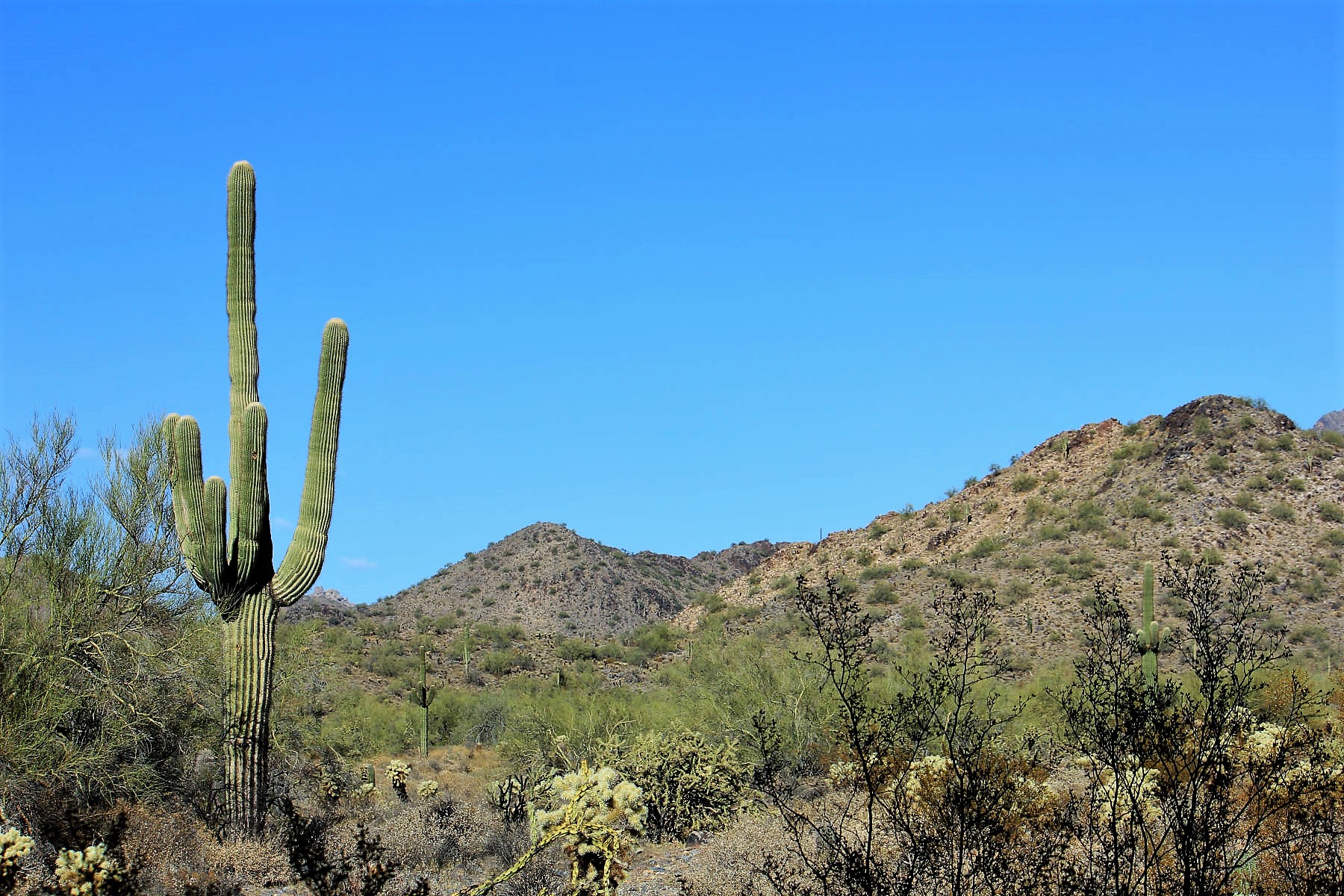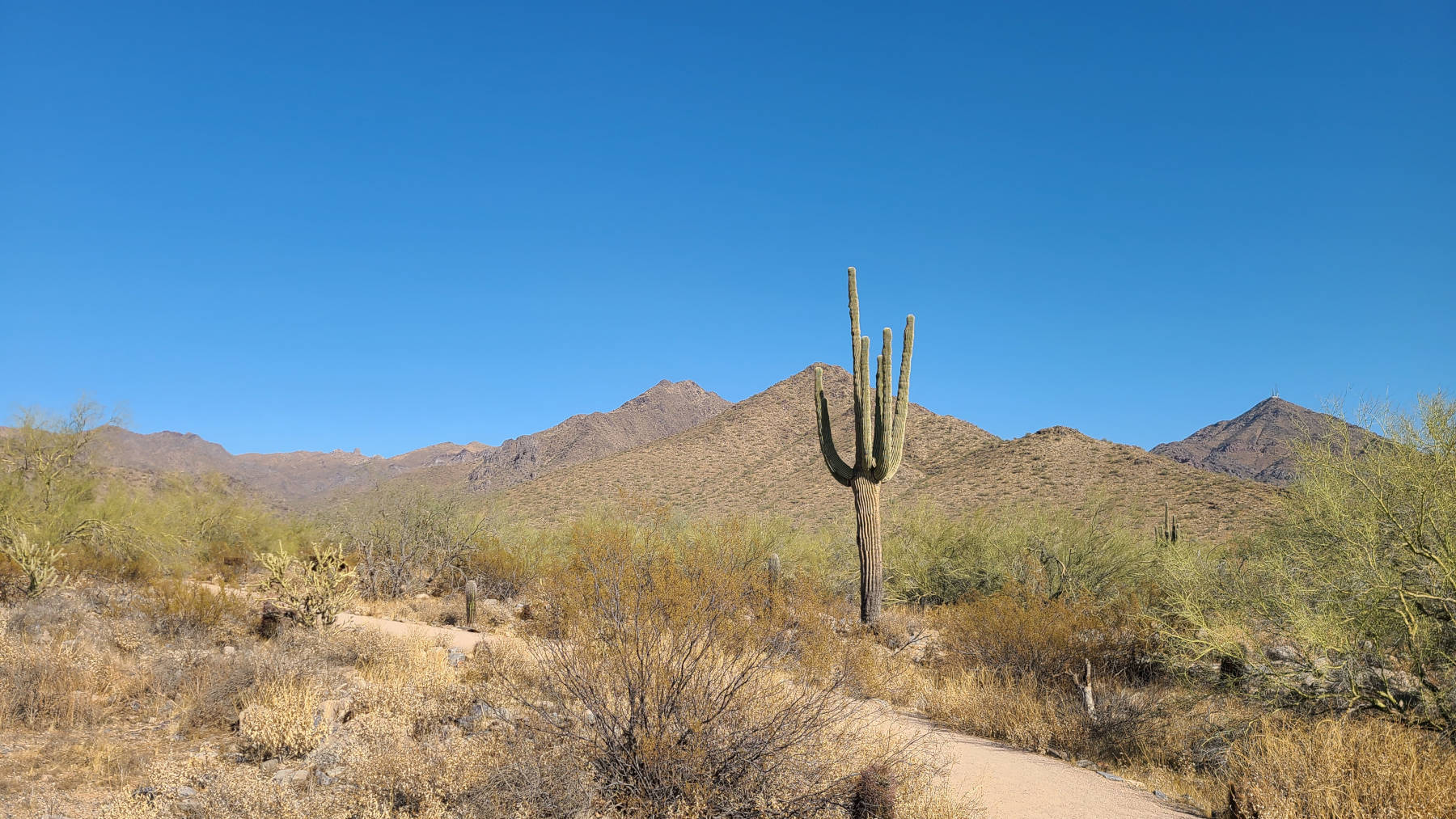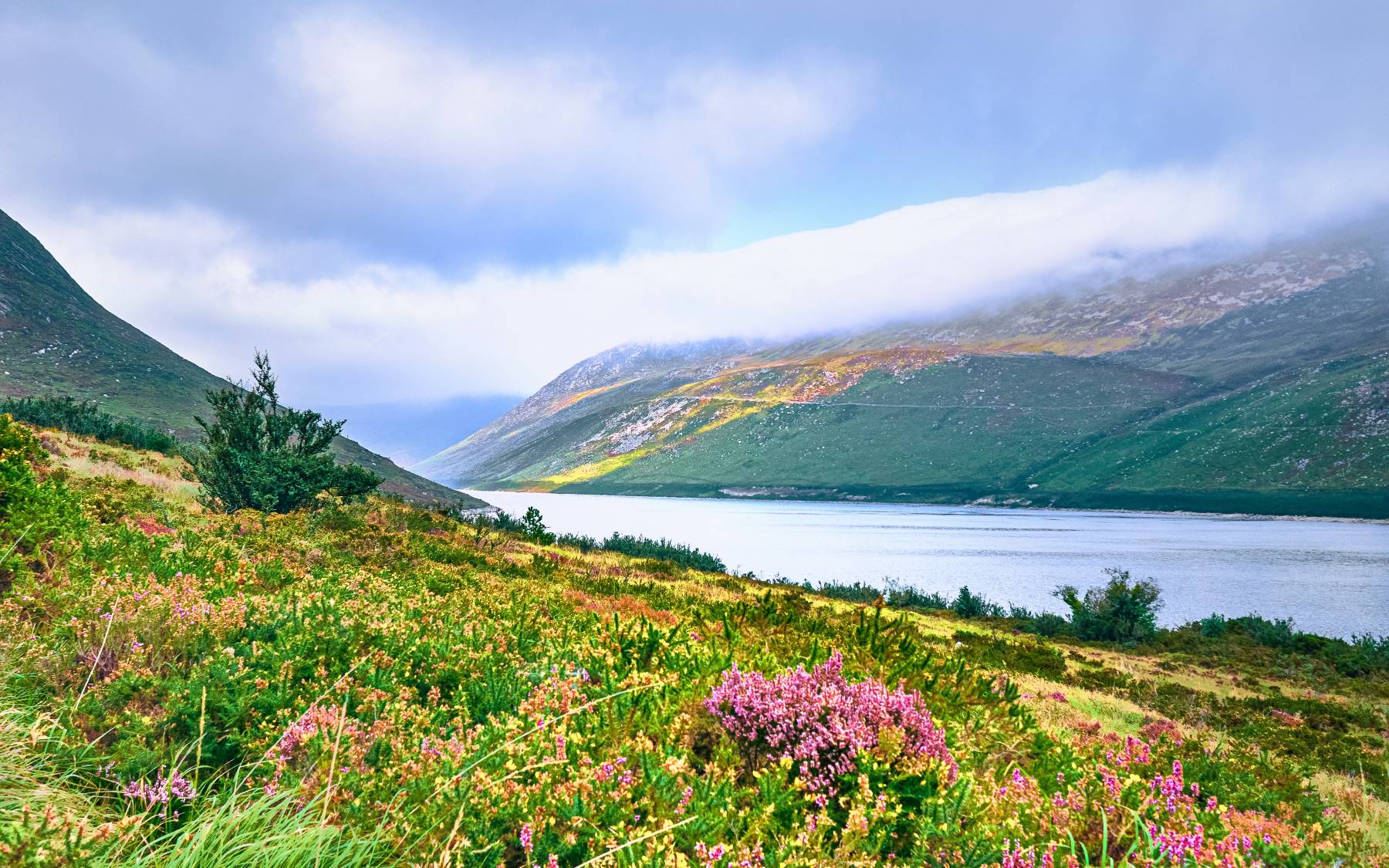As spring transitions to summer, getting outside becomes more and more appealing. Most people enjoy hiking in summer because you can move more freely when you’re not weighed down with heavy insulating layers.
It’s also prime time for exploring high alpine lakes, wildflower meadows, and cactus-lined trails in the scenic Southwest. During any season, there are precautions to take before setting out on the trails. For example, what to wear and what to carry with you.

Don’t let the heat deter you. This guide will help you enjoy hiking in hot weather and make the most of your summer outdoor adventures, so you stay safe and beat the heat!
HelloTrail® is reader-supported. We may earn a commission, at no additional cost to you, on purchases made from our expert chosen links.
Summer Hiking Tips
Intense heat can be defeating, especially in the Southwest and the Eastern and Southernmost parts of the country. When you’re planning a summer hike you should take these tips into consideration:
1. Know the Climate You Will Be In
Summer is known for its soaring temperatures, humidity and warmer nights. But where you are in the country will play a significant role in the climate you experience.
Even though the temperatures at sea level might be in the high 90s, you can venture into the high elevation mountains and experience a significant temperature drop. You may even have to plan as if you were hiking in the fall.
Rainfall also varies depending on where you are. It is very dry in the mountains, Southwestern and Northwestern regions during summer. But you do have to be aware of afternoon thunderstorms.
While in the East and South, you can experience quite a bit of rainfall. The best thing to do? Be prepared for anything.
Northwest Climate
Summer temperatures in the Northwest range between 75 and 90 degrees Fahrenheit on average. With warmer temps during the day and cooler temps at night.
This is the driest time of the year, as the area only receives between 0-2 inches of precipitation on average.
Climate in the Mountains
The mountainous regions of the US feature cooler temperatures due to the higher elevation. If you are at 10,000 feet in elevation, temperatures can be in the 70s and 80s. But if you drop 2,000 feet, you will see temperatures in the 80s and 90s.
As always, temperatures are higher during the day and lower at night.
The mountainous regions are drier in summer. Receiving 1-2 inches of rainfall on average. Still, unexpected afternoon thunderstorms are typical, so bring rain gear if you’re hiking late in the day.

Southwest Hiking Climate
Arizona, Utah and Nevada are only a few states that experience scorching hot temperatures in the summer in the Southwest. The average highs are usually over 100 degrees, with lows only dropping into the 80s.
Shade is hard to find since you are in the desert and most of your landscaping consists of cacti.
Flash flooding is a danger due to afternoon thunderstorms and monsoons. Always check the weather forecast before heading out on a hike, and if possible, start early in the morning. Avoid slot canyons if there is any chance of rain.

The picture above was a fun hike around the McDowell Sonoran Preserve in Arizona, but if you are not used to dry weather make sure to stock up on water! It was well worth the trip and just one of the many things to in Scottsdale no matter what time of year you visit.
Northeast Climate
The lower part of the Northeast is warmer than the upper tip, specifically Maine. Maine experiences some of the nicest summer weather in the country, with average temperatures between 60 and 70 degrees Fahrenheit.
While New Hampshire, Vermont, and New York are warmer, with temperatures ranging between 70 and 80 degrees.
Eastern Climate
The East is a warm place to hike in summer. Temperatures average above 80 degrees Fahrenheit, although during the day they can soar into the 90s. The further south you go, the warmer the temperatures will get.
Southern US Hiking Climates
The South is sweltering hot in the summer, with temperatures high into the 90s, particularly in Florida. Evening temps range between 75 and 85 degrees, with high humidity in the mornings.
Expect afternoon thunderstorms and almost unbearable heat during peak daytime hours. It’s best to hike in the early mornings or evenings to stay “cool” in the South.
2. What to Wear Hiking in Summer
Light colors are your best choice to wear when hiking in the summer. Dark colors will absorb the sun’s rays, making your body warmer. While lighter colors will reflect the sun’s rays, keeping you cooler.
Look for UPF fabric, which will protect against the harmful rays of the sun. Outdoor companies design UPF-rated clothing ranging from UPF-15 protection to UPF-50+.
Wear Long Sleeves and Pants
This probably seems like the opposite of what you should do in summer, but covering up your arms and legs protects them from the sun. This is especially necessary for people with sensitive skin.
Not only do long sleeves and pants help protect against the sun, but the fabric is also an extra barrier between you and the overgrown brush and those pesky insects.
Also, wearing breathable clothing allows for plenty of airflow, even in the sweltering heat.
Wear Sun Protection Accessories
It should go without saying that sunglasses protect your eyes from the sun’s harmful rays. And hats, bandanas, and neck gaiters are great for carrying with you on a summer hike.
Sun hats are better than baseball caps since they provide sun protection for your neck and face. Bandanas and gaiters can be submerged in water and hung around your neck to help cool you off.
Best Hiking Clothes for Hot Weather
Below is a quick list of summer hiking clothes you can add to your wardrobe to get you through those hot hikes…
3. Use Sunscreen
It might seem like a no-brainer, but we can’t reiterate this enough – WEAR SUNSCREEN! Even hiking on a cloudy day exposes your skin to UV rays.
Apply sunscreen thirty minutes before you head outside and carry some with you so you can reapply every two hours while you’re on your hike.
One of my go-to sunscreens is Kokua Sun Care. It is a non-nano zinc oxide, which is an active ingredient in mineral sunscreens that provides broad-spectrum coverage against UVA and UVB rays. Zinc Oxide is especially important when in high altitudes. Kokua sunscreen is both reef and environmentally safe.
4. Avoid the Hottest Time of Day
Plan on starting a hike early in the morning and finishing before the afternoon, if possible. The hottest part of the day is usually between noon and 3 pm. If you plan on going on an all-day hike, you will need to take breaks and seek shelter or shade.
Some hikers even wait out the hottest part of the day before continuing back to the trailhead.
5. Try Out Night Hiking
While night hiking is not recommended for beginners, it does help avoid the hot summer days. Check out the video below and tell me you wouldn’t enjoy this…
With experience, a guide, and illumination, it can be a great way to avoid the summer heat and experience a hike under the stars.
6. Seek Out Shade
This one might seem obvious, but you have to be careful hiking in the heat and sun. Search for wooded trails. If you’re hiking in an open area, when you do come across shade, take advantage of it with plenty of breaks.
7. Find Hikes That Lead to Water
There’s nothing better than taking a dip in a pool at the base of the waterfall. Look for hikes that lead to water sources or run along a riverbank, the ocean, or a lake. This gives you the option to cool off when needed.

Dipping in your shirt, hat, or bandana is a great way to cool off if you don’t want to go swimming. The fabric will cool down your body as the water evaporates.
8. Carry Plenty of Water
Please, bring enough plenty of water on your hot weather hike. Whether that is in the form of a reusable water bottle or hydration reservoir you should be prepared. You’re going to be drinking a lot more water on a summer hike than you would any other season.
To stay hydrated, take a sip of water every 10-15 minutes, even if you’re not thirsty.
We recommend a Camelback hydration backpack, or at the very least, a water purifying bottle, but you will need a water source somewhere on your hike.

9. Take Preventative Chafing Measures
Hiking in summer makes you more susceptible to chafing – usually in all the worst places. To start, wear synthetic underwear… avoid cotton! Synthetic fabrics wick moisture away from your body and protect you from chafing.
Also, body glide and anti-chafing creams are highly suggested by ultra runners. If you’re prone to chafing, take their lead and apply some before setting out on a summer hike. It’s easy enough to toss some into your pack and carry it with you, as well.
10. Summer Hiking Safety Tips
Hiking in the heat can have some repercussions if you don’t take appropriate precautions. Exploring in hot weather can result in a sunburn, dehydration, heat exhaustion, and many other medical conditions.
Here’s an overview of medical considerations, ways to avoid these situations, and tips on handling them if they happen to you or someone in your hiking party.
Sunburn
Sunburn is one of the most common occurrences when hiking in summer.
A combination of UPF-rated clothing and applying sunscreen to exposed skin is your best line of defense against sunburn.
Pick the sunscreen that’s appropriate for you. If you have fair skin, you will want a sunscreen with a high SPF (I always use SPF 50).
Water-resistant sunscreen is a must because you’ll be sweating on your hike. Remember to apply sunscreen thirty minutes before you set out and reapply every two hours.
If you go for a swim, reapply once dried off. Even the best sunscreens lose their effectiveness after time in the water.
If you do get sunburned, be sure to treat it with aloe vera gel when you get home. Taking ibuprofen can help reduce pain and inflammation also. If you’re going to be outside again the next day, be sure to cover the affected area with clothing.
The worst thing to do is expose sunburned skin to more sun.
Dehydration
Dehydration occurs when you don’t drink enough water. If not addressed, it leaves you feeling poorly and can lead to other health conditions like heat exhaustion and heatstroke. The more you sweat, the quicker you dehydrate, and the more water you need to be drinking.
The key to avoiding dehydration is to drink plenty of water. How much you need to drink depends on the exercise intensity, temperature and humidity. A general rule of thumb is to drink half a liter of water per hour during moderate activity and moderate temperatures.
The hotter it gets outside, the more you need to drink. Bringing more water than you need is always better than running out. A hydration reservoir is an efficient way to carry water.
Not only is it easier to drink from, but it saves you the bulk of many water bottles in your backpack.
If you’re hiking with your dog, you’re going to need to bring enough for them as well and a packable water bowl.
Eat Frequently
While the warm weather might make you feel less hungry, you should eat to keep your body fueled. It’s working hard to keep you cool and you need to return the favor!
Heat Exhaustion
Heat exhaustion results from prolonged exposure to the elements and is likely accompanied by dehydration. This is one of the more serious medical conditions associated with hiking in hot weather.
Symptoms include faintness, dizziness, nausea, rapid pulse, profuse sweating, and fatigue.
If you or one of your hiking buddies is experiencing heat exhaustion, it’s essential to get yourself or them out of the heat immediately. Seek shelter or a shady area and remove your pack and unnecessary clothing. Lay down, rest, and cool off.
Splash water on your face or wet an article of clothing and apply it to the back of your neck or wrists, which will help cool you off. Start rehydrating immediately.
Drink plenty of water in slow, steady sips so that you don’t upset your stomach. If you have electrolyte tablets, add them to your water.
The key to preventing heat exhaustion includes:
- Wearing appropriate clothing
- Acclimatizing to the heat
- Staying hydrated
- Taking plenty of breaks in the shade.
Know your limits – if you’re headed out on your first hike of the summer, only go a few miles. While you might be in shape, hiking in the heat can sap your energy, so start slow and build up to longer hikes.
Heat Stroke
Heat Stroke is the most serious medical condition associated with hiking in summer. Symptoms are similar to heat exhaustion but much more severe. They are accompanied by a throbbing headache, confusion, disorientation, and a high body temperature.
It occurs very rapidly and requires immediate medical attention.
The treatment is like heat exhaustion, but more drastic measures need to be taken to cool off the body temperature. Evacuating the hiker and getting them to a hospital is necessary to ensure no internal damage occurs.
You can prevent heat stroke the same way you can avoid heat exhaustion.
What to Wear Hiking in 80 Degree Weather
When you are hiking in 80 degree weather you should wear loose, lightweight breathable clothing. Even though it may sound counterproductive, you may want to wear long sleeves and hiking pants during the summer months to help protect your skin from too much sun exposure. Many manufacturers like Prana and Smartwool make outdoor clothing specifically for summer hiking.
Is it safe to hike in hot weather?
Yes, it is safe to hike in hot weather as long as you take precautions and plan accordingly. Start early and bring plenty of water to drink to avoid dehydration. Wear lightweight, loose-fitting and moisture wicking clothes. Use sunscreen and wear a hat to protect your head and face from the sun.
Take plenty of breaks and find shaded areas on the trail when possible to give your body a break from the heat. Also, any time you head out on the trails let friends and family know where you will be.
How hot is too hot for hiking?
If you are going to be hiking in 90 or 100 degree weather you need to be prepared that this may be too hot for hiking. It is possible to enjoy a day on the trails in this extreme summer heat as long as you start early and try to complete your hike before the hottest part of day, typically between noon and 3pm.
Wear light colored clothing, drink plenty of water, wear a hat and take breaks in the shade whenever possible. If your planned hike is fully exposed to the sun then consider starting before sunrise and use a headlamp to be safe.
Wrapping It Up…
One of the greatest appeals of summer hiking is the refreshing feeling of jumping into a pool at the base of a waterfall or lounging in a comfy hammock near a lake.
If you’re a beginner hiker, summer is a perfect season to start your journey into hiking. The warm temperatures require fewer layers and offer decent weather in most climates around the country. Pack plenty of water, apply your sunscreen, and call up your friends – it’s time to hit the trails.
